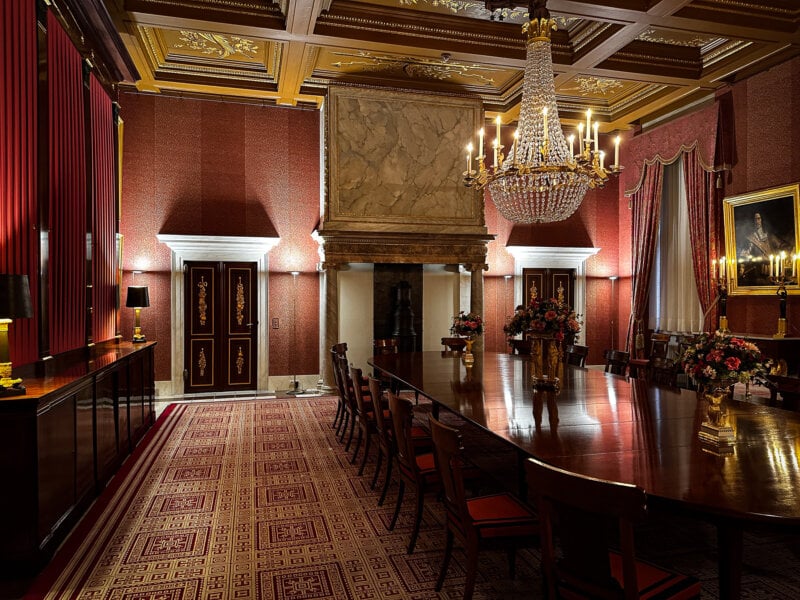The Royal Palace of Amsterdam (also known as Koninklijk Paleis van Amsterdam or Paleis op de Dam), is one of the most significant landmarks in the Netherlands. It’s in the center of Amsterdam, opposite the War Memorial and next to the Nieuwe Kerk. The palace’s history dates back to the 17th Century when it was initially built as the city hall for the magistrates of Amsterdam.
Today, the Royal Palace of Amsterdam is a national monument, one of three palaces in the Netherlands at the Dutch monarch’s disposal by the Act of Parliament. It’s a significant cultural property and historical monument attracting visitors from every corner of the earth. The palace is open to the public annually and typically hosts a range of exhibitions and events throughout the year.
The Royal Palace of Amsterdam features remarkable architecture that reflects the rich history of the Dutch Golden Age. It features a neoclassical facade, a central dome, and four wings surrounding a large courtyard. The palace’s interior is equally impressive, with lavish decorations, marble floors, and intricate murals. Visitors can explore the palace’s many rooms, including the Royal Apartments, the Council Chamber, and the Citizens’ Hall.
History of the Royal Palace Amsterdam

The Royal Palace Amsterdam, located on the west side of Dam Square, was initially built as a city hall for the burgomaster and magistrates of Amsterdam. The celebrated architect Jacob van Campen designed the palace and constructed it entirely of white stone. The palace and city hall’s construction were completed in four phases, with the first section opening in 1655.
Construction of the Royal Palace
The palace’s design is a perfect example of Dutch Baroque architecture, with its grand entrance, impressive staircase, and elegant furnishings. It drips with opulence both inside and out.
The first phase of the palace’s construction began in 1648 and was completed in 1655. The second phase began in 1660 and was completed in 1665. The third phase began in 1734 and was completed in 1737.
The final stage was added much later and not part of van Campen’s original design. Following the French-backed revolution, and the ascension of Napolean’s brother to the Dutch throne, construction began in 1808 and was completed in 1815 – five years after Louis Napoleon was forced to abdicate.
See Related: Famous Buildings in Amsterdam to Visit
Royal…
Click Here to Read the Full Original Article at ViaTravelers…
